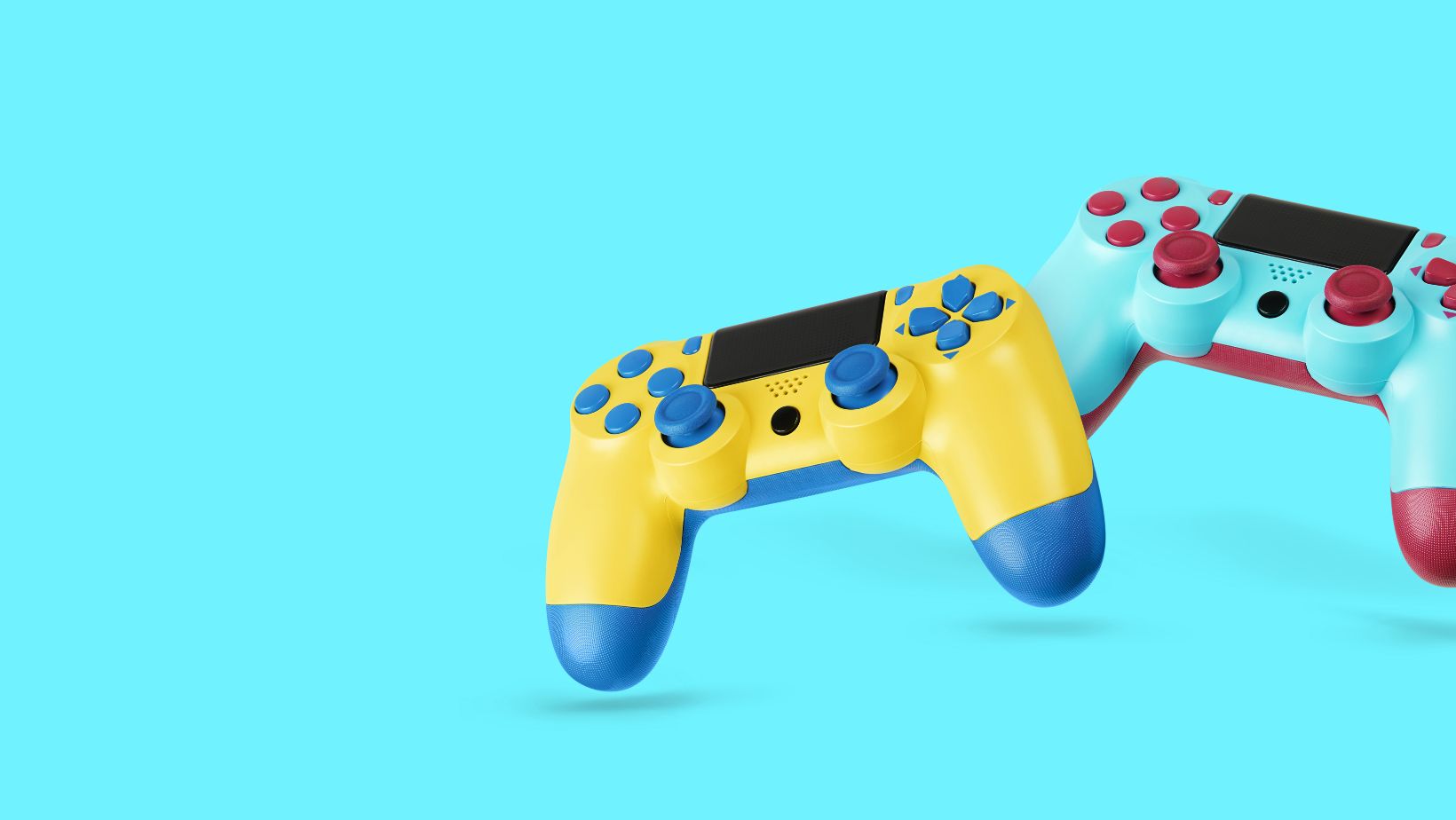 In the fast-paced world of esports, team logos play a crucial role in shaping identity and brand recognition. These vibrant designs not only reflect a team’s spirit but also create a lasting impression on fans and gaming competitors alike. As the esports industry continues to grow, the significance of a well-crafted logo becomes even more apparent.
In the fast-paced world of esports, team logos play a crucial role in shaping identity and brand recognition. These vibrant designs not only reflect a team’s spirit but also create a lasting impression on fans and gaming competitors alike. As the esports industry continues to grow, the significance of a well-crafted logo becomes even more apparent.
From fierce animals to intricate symbols, each logo tells a story that resonates with players and supporters. The right logo can elevate a team’s presence, fostering loyalty and community engagement. As fans dive deeper into the esports universe, understanding the artistry and strategy behind these logos reveals the passion that fuels the competitive gaming scene.
Key Takeaways
- Identity and Recognition: Esports team logos are essential for establishing a team’s identity and fostering brand recognition within the competitive landscape.
- Emotional Connection: A well-crafted logo evokes pride and loyalty, strengthening the bond between teams and their supporters through color psychology and symbolism.
- Design Elements: Effective logos incorporate key elements such as color palettes, typography, and iconography, each playing a significant role in enhancing brand identity and engagement.
- Trends in Design: Modern esports logos often feature minimalist designs, dynamic colors, and custom typography to create memorable and recognizable branding that appeals to diverse audiences.
- Challenges in Creation: Designers face various challenges, including balancing creativity with brand identity, addressing diverse demographics, and ensuring scalability across different platforms.
- Cultural Relevance: Incorporating regional and cultural elements into logo design is vital for resonance with fans, contributing to a stronger community connection and engagement.
Esports Team Logos
Esports team logos serve as crucial visual representations of a team’s identity. These logos create brand recognition and foster community loyalty. Distinctive designs reflect a team’s spirit and values, establishing a connection with fans and competitors alike.
Logos in esports often incorporate elements such as mascots, color schemes, and typography. Teams use unique color palettes to convey emotions and evoke specific responses from their audience. For example, bold colors might represent strength, while softer hues convey approachability.
Furthermore, logos often embody the team’s history or geographical roots, adding layers of meaning. A logo featuring regional symbols can create a strong local connection, enhancing fan engagement. By encapsulating a narrative, logos resonate with players and supporters, making them integral to the esports experience.
The artistry involved in logo design requires a blend of creativity and market insight. Designers conduct thorough research to understand target demographics and industry trends. Each element of a logo, from shapes to lines, communicates values and aspirations, ultimately influencing how the team is perceived within the broader esports culture.
Importance of Logo Design
Logo design holds significant weight in the esports industry, shaping a team’s identity and facilitating brand recognition. Well-crafted logos not only symbolize a team’s spirit but also create lasting impressions on fans and competitors.
Branding and Recognition
 Logos serve as key branding elements for esports teams. They differentiate teams from their rivals, ensuring easy identification during tournaments. Effective logos encapsulate a team’s ethos through impactful visuals, making them memorable for fans. Strong branding strategies rely on unique design features, including typography, mascots, and color schemes, which solidify a team’s presence in the competitive esports market. As teams often gain sponsorships, a recognizable logo enhances their marketability, attracting potential partners and advertisers.
Logos serve as key branding elements for esports teams. They differentiate teams from their rivals, ensuring easy identification during tournaments. Effective logos encapsulate a team’s ethos through impactful visuals, making them memorable for fans. Strong branding strategies rely on unique design features, including typography, mascots, and color schemes, which solidify a team’s presence in the competitive esports market. As teams often gain sponsorships, a recognizable logo enhances their marketability, attracting potential partners and advertisers.
Emotional Connection with Fans
Logos foster emotional ties between teams and their fanbases. A well-designed logo evokes feelings of pride, loyalty, and affiliation among supporters. Color choices play a pivotal role in this connection; vibrant hues create energy, while softer tones invite approachability. By symbolizing shared values or aspirations, logos allow fans to feel deeper engagement with their teams. Unique logos that reflect a team’s history or local roots enhance this bond, encouraging community involvement and long-term support. The emotional impact of a logo can transform casual viewers into dedicated fans, significantly enhancing a team’s visibility and success within the esports community.
Elements of Effective Esports Team Logos
Effective esports team logos consist of critical elements that enhance brand identity and fan engagement. Key components include color palette, typography, and iconography, each serving a specific role in logo design.
Color Palette
Color palettes play a crucial role in logo design, influencing team perception and emotional connection. Teams often choose bold colors to convey strength and energy, while softer hues can suggest friendliness and approachability. For example, red evokes passion and intensity, while blue conveys trust and calmness. Consistent use of color enhances brand recognition, enabling fans to easily associate specific colors with their favorite teams. It’s essential for designers to consider color psychology when selecting hues, ensuring the palette aligns with the team’s values and image.
Typography
Typography significantly impacts the overall effectiveness of esports team logos. The font style chosen reflects a team’s character and can enhance readability across various platforms. For instance, bold, modern fonts often represent strength, while more playful fonts can convey a sense of fun or creativity. The typeface should complement the logo’s visual elements and reinforce brand identity. Consistency in typography across all branding materials helps build a cohesive image, making it easier for fans to recognize and connect with the team.
Iconography
Iconography contributes to the uniqueness of esports team logos, serving as a visual anchor that fans relate to. Icons can include mascots, symbols, or emblems, and they often encapsulate the team’s spirit and values. A well-designed icon enhances memorability and creates instant recognition. For example, an eagle can symbolize strength and determination, while a dragon may reflect fierceness and competition. Effective iconography ensures that a logo is visually distinct and resonates with the target audience, fostering loyalty and community connection.
Analysis of Popular Esports Team Logos
Esports team logos represent a significant aspect of branding in the competitive gaming landscape. They embody a team’s identity and resonate with fans, influencing perceptions and loyalty.
Case Studies: Successful Designs
- Team Liquid: Team Liquid’s logo, featuring a stylized horse, utilizes a blue and white color scheme that conveys agility and strength. The design reflects its legacy in both esports and traditional sports, fostering a strong emotional connection with its fanbase.
- Cloud9: Cloud9 incorporates a sleek, modern design with a distinctive cloud motif. The use of blue and white gradations evokes feelings of both calm and excitement, enhancing brand recognition while appealing to its diverse audience.
- FaZe Clan: FaZe Clan’s logo is characterized by bold red lettering and a distinctive black outline. The aggressive design symbolizes its competitive edge and resonates with a younger demographic, establishing it as a cultural icon within esports.
- G2 Esports: G2’s logo blends modern typography with homage to medieval aesthetics, reflecting the vintage and competitive spirit. Its monochromatic color palette emphasizes versatility, making it instantly recognizable across various platforms.
- Minimalism: Simple, clean designs dominate the current landscape, allowing logos to be easily identifiable. Minimalist logos often prioritize essential elements that maintain visual appeal across multiple sizes and mediums.
- Dynamic Colors: Vibrant color schemes create bold statements that attract attention. Color trends fluctuate, but many teams favor neon and gradient effects, reflecting energy and creativity.
- Geometric Shapes: Many logos integrate geometric components, creating a sense of structure and modernity. This design trend fosters a futuristic appeal, resonating with the tech-savvy gaming community.
- Mascot Integration: Many logos feature unique mascots representing team spirit. Mascots establish emotional connections, allowing teams to differentiate themselves while fostering community engagement.
- Typography Variability: Custom font styles enhance brand identity, with many teams opting for bespoke typefaces that reflect their ethos. Clear, memorable typography improves recognition and reinforces the team’s narrative.
These elements demonstrate the evolving nature of esports logos, highlighting their significance in enhancing team branding and identity within a rapidly-growing industry.
Challenges in Esports Logo Creation
 Creating effective esports logos presents several challenges that designers must navigate. These challenges impact the final design and its reception by the target audience.
Creating effective esports logos presents several challenges that designers must navigate. These challenges impact the final design and its reception by the target audience.
- Balancing Creativity and Brand Identity
Designers must balance innovative ideas with the existing brand identity. Striking this balance ensures that logos remain fresh yet recognizable. A logo must stand out while maintaining elements that define a team’s brand. - Understanding Diverse Audiences
Designers face difficulties in addressing the varied demographics within the esports community. Demographics include age groups, nationalities, and gaming interests. Creating a logo that resonates across different audience segments often proves challenging. - Incorporating Cultural References
Cultural relevance holds significant importance in esports logos. Designers must consider regional cultures, especially for global teams. Failing to incorporate these aspects can lead to misunderstandings and disconnect with fans. - Adapting to Trends and Technology
The fast-paced environment of esports requires logos to adapt to changing trends and technologies. Designers must keep up with evolving styles, such as minimalism and dynamic graphics. Additionally, logos should be suitable for varied platforms, from social media to merchandise. - Ensuring Scalability and Versatility
Logos must function across different mediums and scales, from small icons to large banners. Ensuring scalability while maintaining clarity poses a challenge. Designers must create logos that remain effective in both digital and physical formats. - Managing Client Expectations
Designers often encounter difficulties in aligning their creative vision with client expectations. Clear communication and revisions become critical in this process. Understanding client needs while advocating for design principles can lead to a successful collaborative outcome. - Intellectual Property Considerations
Copyright and trademark issues often complicate logo creation. Designers must ensure originality while avoiding similarities to existing logos. Conducting thorough research on competitors becomes necessary to establish a unique identity.
Navigating these challenges is crucial for creating impactful esports logos that resonate with fans and reflect a team’s ethos, ultimately enhancing brand recognition in the competitive esports landscape.
Logos for Gaming Teams
Esports team logos are more than just symbols; they encapsulate a team’s identity and foster connections with fans. As the industry evolves, the importance of a well-designed logo becomes increasingly evident. Each logo serves as a visual narrative that reflects a team’s spirit and values, enhancing brand recognition and loyalty.
The artistry involved in logo design combines creativity with strategic insight, ensuring that every element resonates with the target audience. By understanding current trends and audience demographics, designers can craft logos that stand out in a competitive landscape. Ultimately, effective logos play a crucial role in shaping a team’s presence in the esports community, transforming casual viewers into dedicated supporters.